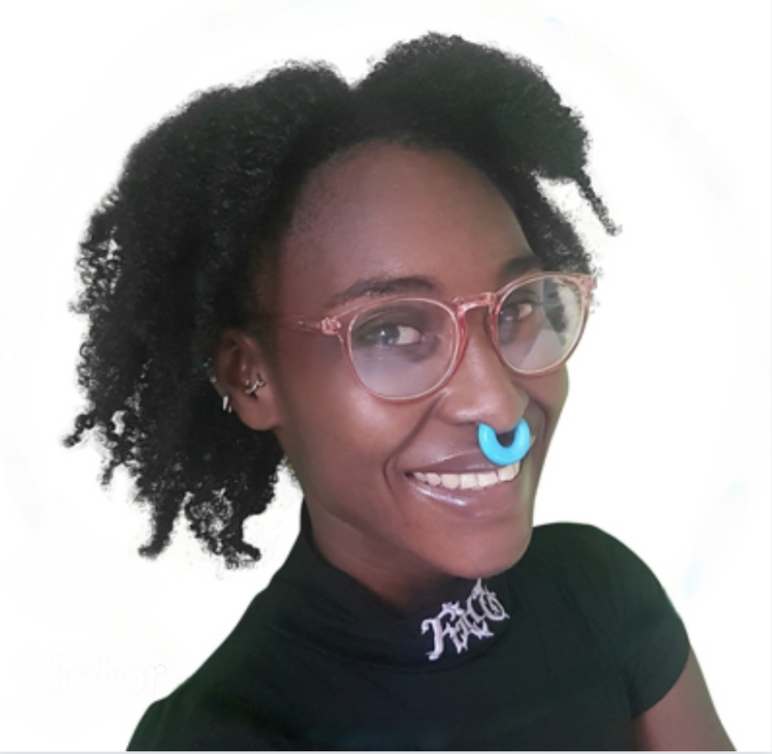Diversity fatigue is an often overlooked but critically important aspect of workplace diversity. As leaders in diversity, equity, and inclusion (DEI), talent acquisition, or recruiting, you’re leading the way in promoting diversity in your organizations.
What is diversity fatigue?
Diversity fatigue is when people feel tired and frustrated from trying to make workplaces more diverse and inclusive. It’s not just feeling tired for a moment. It’s when many people in a group feel worn out, disappointed, or even against trying to improve diversity at work.
Imagine this: your company starts some new diversity programs, like training to understand biases and hiring more diverse people. At first, everyone’s really excited about it, both the employees and the leaders. But as time passes, things start to change. People aren’t as excited anymore, they’re not as involved, and some are even starting to doubt if these programs are really helping. This is what we call diversity fatigue.
But what exactly causes diversity fatigue?
- Overwhelm from Initiative Overload: Companies often give employees a lot of diversity projects, which can make them feel overwhelmed and not sure where to focus.
- Perceived Lack of Progress: Even when companies try to make things more diverse, employees might feel disappointed because things aren’t changing quickly or they don’t see real results.
- Resistance to Change: Some individuals within the organization may resist diversity efforts, viewing them as unnecessary or as a threat to the status quo.
- Inconsistent Commitment: When leaders don’t consistently support diversity efforts, or when these efforts seem more like a formality than real action, employees might wonder if the company truly cares about diversity and inclusion.
- Emotional Labor: People from underrepresented groups might feel really tired from always having to speak up for themselves or teach others about diversity.
So, it’s really important for companies that want to make inclusive workplaces to understand what diversity fatigue is all about.

Why does diversity fatigue matter?
Diversity fatigue is a big problem that can cause problems for companies trying to make their workplaces more inclusive. Here’s why diversity fatigue matters:
- Stifled Progress: Diversity fatigue can slow down efforts to make workplaces more diverse and inclusive. When employees lose interest or feel disappointed with diversity programs, it can stop progress, making it hard to make real changes in the company.
- Undermined Engagement: When employees feel tired of diversity efforts, they might lose interest in their jobs or not want to help with diversity anymore. This can make them less productive, and unhappy, and could even make them leave the company.
- Erosion of Trust: Diversity fatigue can make employees not trust their bosses. When employees see that the company doesn’t really care about diversity or does things inconsistently, they might start to doubt the company’s values and intentions.
- Impact on Workplace Culture: When people are tired of dealing with diversity issues at work, it can make the whole atmosphere bad. So, people might start to dislike each other and argue more. They might also start to be mean to each other. Thus, making it hard to work together and be inclusive.
- Reputational Risk: If companies don’t deal with diversity fatigue well, it can make people think badly of them, both inside and outside the company. This might stop talented people from wanting to work there and could also make customers less loyal and have a worse opinion of the company’s brand.
- Missed Opportunities for Innovation: Inclusive organizations are better positioned to harness the diverse perspectives and talents of their workforce. In effect, driving innovation and creativity. However, diversity fatigue can stifle this potential. So, this can lead to missed opportunities for innovation and competitive advantage.
How to recognize signs of diversity fatigue in your organization
Recognizing the signs of diversity fatigue is the first step toward effectively addressing this pervasive issue within your organization. So, here are some key indicators to watch for:
Decreased Participation:
Pay attention to how involved people are in diversity activities like training sessions or meetings. If fewer people show up or seem less interested, it could mean they’re getting tired of it.
Limited Feedback or Input:
See if employees are giving less input about diversity and inclusion. When people are tired of it, they might not want to share their thoughts or give feedback anymore.
Increased Skepticism or Cynicism:
Pay attention to signs that employees might not believe in diversity efforts. So, if they make negative comments or seem doubtful about whether diversity programs are working, it could mean they’re getting tired of it.
Resistance to Change:
Watch out for people who don’t like diversity efforts, even if they don’t say it directly. They might show it through their actions, like not wanting to join diversity programs or disagreeing with diversity policies.
Emotional Exhaustion:
Keep an eye out for employees who show emotional exhaustion, especially those from underrepresented groups. Dealing with diversity issues all the time can be exhausting and stressful for them.
Increased Turnover Among Marginalized Groups:
High turnover rates, especially among marginalized or underrepresented groups, might point to dissatisfaction or disillusionment with how the organization handles diversity and inclusion.
Stagnation in Diversity Metrics:
Regularly check diversity metrics to see how we’re doing with diversity goals. So, check if key diversity indicators, like how many different kinds of people are there and whether they are feeling like part of the team. Find out whether these things are getting better. And if not, it might mean people are getting tired of dealing with diversity issues.
The impact of diversity fatigue on workplace culture and employee engagement

Diversity fatigue significantly influences workplace dynamics and employee involvement. Therefore, exploring its effects reveals the impact it has on workplace culture and employee engagement. Let’s explore how diversity fatigue can shape your organization:
Erosion of Trust and Morale:
When employees think diversity efforts aren’t genuine, it makes them trust the leaders and the organization less. So, this can make employees feel less happy and lower levels of involvement in their work.
Divisiveness and Fragmentation:
Diversity fatigue divides the workplace, making employees turn against each other and stop working together. So, instead of bringing people together, diversity fatigue makes them feel angry and unfriendly towards each other.
Stifled Innovation and Creativity:
Inclusive workplaces do well when people have different ideas and viewpoints, which helps them come up with new and creative things. However, when people experience fatigue from dealing with diversity, it can decrease their excitement and stop them from sharing their own thoughts and ideas.
Decreased Psychological Safety:
Feeling safe to take risks and speak up without getting in trouble is really important for having honest conversations and giving helpful feedback. But when people no longer want to deal with diversity issues, it can make them not want to talk about it because they’re afraid of what might happen.
Impact on Employee Well-being:
Dealing with diversity challenges all the time when you don’t want to can really affect how employees feel. People from minority groups might feel even more stress, anxiety, and burnout because they have to work extra hard to ensure their involvement in the organization.
Retention and Turnover Concerns:
Diversity fatigue can affect employees heavily. Thus, it can cause them to leave their jobs more often, especially if they’re from minority groups. So, if employees feel disappointed or like their efforts to improve diversity are not getting recognition, they might look for jobs somewhere else. This can make it hard for the organization to keep top talent.
Therefore, understanding the impact of diversity fatigue on workplace culture and employee engagement is crucial for organizations committed to fostering inclusive environments.
Overcoming resistance: Strategies for addressing diversity fatigue among leadership
Addressing diversity fatigue among leadership is critical for fostering a culture of inclusivity and driving meaningful progress in diversity and inclusion initiatives. Here are some effective strategies for overcoming resistance and reinvigorating leadership commitment to diversity efforts:
Education and Awareness:
Continuously educate and train leaders to help them understand diversity issues better and why inclusive leadership is important. When leaders learn more and empathize with others, they can understand the difficulties that minority groups face and dedicate more resources to making a difference.
Transparent Communication:
Encourage leaders to create open and honest ways for talking about diversity issues, concerns, and progress with employees. Leaders must be transparent and share information. It builds trust and makes it easier to talk about diversity, reducing doubt and pushback against diversity efforts.
Setting Clear Expectations:
Make sure to clearly tell leaders what’s expected of them when it comes to diversity efforts. So, this includes joining training programs, supporting diversity initiatives, and making sure everyone feels included. When expectations are clear, it shows how important diversity is and makes sure leaders are responsible for making things better.
Leading by Example:
Encourage leaders to set a good example by taking part in diversity initiatives and showing inclusive behaviors. Also, they must encourage diversity in their teams and the whole organization. So, when leaders show they care about diversity, it sends a strong message that it’s really important to the company.
Providing Resources and Support:
Give leaders the things they need to support diversity efforts in their teams. So, this might mean giving them access to diversity training, matching them with mentors, and providing support networks. These resources help leaders deal with diversity challenges and encourage inclusive behavior.
Creating Accountability Mechanisms:
Set up ways to make sure leaders are doing what they should to meet diversity goals. So, this might include setting diversity goals and checking on diversity regularly. Leaders must also make sure they are doing their part to meet those goals and ensure everyone’s involvement.
Celebrating Successes:
Recognize and celebrate leaders’ efforts to promote diversity and inclusion. So, this could mean giving out awards, having recognition programs, or publicly thanking them. As such, celebrating their successes encourages them to keep doing good things for diversity.
Redefining diversity and inclusion efforts
When dealing with diversity fatigue, organizations need to change how they think about diversity and inclusion (D&I) efforts. So, instead of seeing D&I as separate tasks to check off a list, they should see it as something that’s part of everything the organization does.
To redefine D&I efforts, we need to go beyond basic diversity programs and recognize the bigger problems that keep inequality going at work. So, this means we have to work on biases people might not even realize they have. Also, we must break down unfair systems and create a culture where everyone feels like they belong and receive fair treatment.
This new way of thinking means we have to focus more on making sure everyone feels included, rather than just counting how many different types of people we have. So, it’s not just about having more people from different groups. We also need to make sure everyone feels safe enough to share their ideas and feel like they’re part of the team.
The role of intersectionality in redefining DEI efforts
Also, redefining D&I efforts means we need to understand intersectionality. So, this means we see how different parts of a person’s identity, like race, gender, and ability, all affect each other. When we look at things this way, we can understand the specific challenges people face because of their unique identities and make sure our D&I efforts fit their needs.
In the end, redefining D&I efforts means we have to change how we think. So, instead of seeing diversity and inclusion as things we can choose to do or not, we need to see them as really important parts of making the organization successful. Therefore, it’s about making sure D&I is part of everything we do. And this includes things like our rules, how we work, and the choices we make, so everyone can do well at work.
Holding leaders and teams responsible for diversity goals

Accountability is key when dealing with diversity and inclusion (D&I) goals. Therefore, leaders and teams play a pivotal role in driving D&I initiatives forward and must be held responsible for their progress. Here’s how organizations can foster accountability at every level:
Leadership Accountability:
Leadership sets the tone for D&I efforts within the organization. So, it’s essential for leaders to not only champion diversity initiatives but also be held accountable for their execution. This involves:
- Setting Clear Expectations: Leaders should establish clear expectations for themselves and their teams regarding their roles and responsibilities in advancing D&I goals.
- Leading by Example: Actions speak louder than words. Leaders need to prove their commitmentto diversity and inclusion by how they act, make decisions, and use resources.
- Regular Monitoring and Reporting: Set up ways to watch and report on how leaders are doing with diversity and inclusion. Checking in regularly helps make sure leaders do what they should and gives chances to fix things if the need arises.
Team Accountability:
Accountability shouldn’t stop at the top; it should permeate throughout the organization. Teams at all levels should be held accountable for their contributions to D&I efforts by:
- Establishing Team Goals: Create clear, measurable, and doable D&I goals for each team in the organization. So, make sure these goals match up with the big goals of the organization to keep everything working together.
- Encouraging Collaboration: Encourage team members to work together to reach D&I goals. So, they should talk openly, share what works best, and help each other to make progress.
- Recognizing and Rewarding Progress: Celebrate when teams reach D&I goals. You can do this by giving recognition to people and teams that work hard to make diversity and inclusion better in their areas.
- Providing Resources and Support: Give teams what they need to do D&I projects well. So, this would include things like resources, tools, and training. Help teams that have problems or things blocking them from making progress.
Making leaders and teams responsible for D&I goals helps organizations make sure diversity and inclusion are real priorities, not just ideas. So, when everyone is accountable, organizations can make real changes and create places where everyone feels important, respected, and able to do their best.
Building sustainable diversity programs
To make diversity programs last and have a big effect, organizations need to plan carefully and think about everything. Therefore, they have to keep committing to diversity and be ready to change. They must also be able to make sure they’re responsible for what happens. Here’s how to create programs that stand the test of time:
- Strategic Planning: Develop a clear diversity strategy aligned with business goals. Identify specific goals, initiatives, and metrics to measure progress and hold stakeholders accountable.
- Inclusive Design: Make sure diversity programs include everyone, especially people from groups that don’t always get represented. This is very important to creating and maintaining an inclusive workplace culture. So, get input from lots of different people when planning and doing these programs to make sure they work well for everyone.
- Continuous Assessment: Regularly assess the effectiveness of diversity programs through data-driven metrics, employee feedback, and benchmarking against industry best practices. Use this information to identify areas for improvement and make adjustments as needed to ensure programs remain relevant and impactful.
- Integration with Culture: Embed diversity principles into organizational culture. Ensure that diversity initiatives are not seen as separate or optional but as integral components of the organization’s identity and operations.
- Leadership Commitment: Secure leadership buy-in and hold leaders accountable.
- Employee Engagement: Foster a culture of inclusion where employees feel empowered to contribute to diversity efforts and share their ideas and perspectives. Empower employees to contribute to diversity efforts.
- Resource Investment: Allocate sufficient resources for diversity programs. Provide training and development opportunities for employees and leaders to enhance their cultural competency, unconscious bias awareness, and inclusive leadership skills.
- Partnerships: Collaborate with external groups and experts for insights and support. Collaboration can amplify the impact of diversity programs and foster collective action towards shared goals.
Why I wrote this:
Diversity is not just a moral imperative; it’s a strategic advantage. Organizations that prioritize diversity and inclusion reap the benefits of broader perspectives, enhanced innovation, and stronger employee engagement.
At Ongig, we understand the importance of creating inclusive workplaces from the ground up, starting with job descriptions. Our Text Analyzer tool is designed to help businesses craft job descriptions that attract diverse talent and foster inclusivity. Request a demo of Ongig’s Text Analyzer today and take the first step towards building a more diverse and successful organization. Join us in creating workplaces where everyone can thrive.
Shout-outs:
- America is Tired Of Talking About DEI by Janice Gassam Asare, Ph.D.
- How Your Business Can Overcome Diversity Fatigue
- Diversity Fatigue: What It Is and Why It Matters by Valorie Waldon, B.A., SPHR, SHRM-SCP Director, Human Resource Services
- 6 Diversity fatigue
- Diversity Fatigue: 5 Tips To Overcome At The Workplace
About the author:

Meet Shanece Grant, a word wizard with 8+ years of experience in making marketing magic. She’s great at SEO, writing catchy ads, and loves exploring nature and languages. When not conjuring up captivating content, she’s off writing spooky stories.
